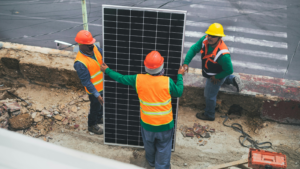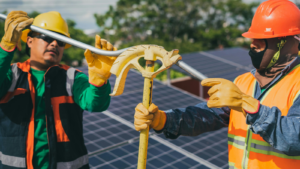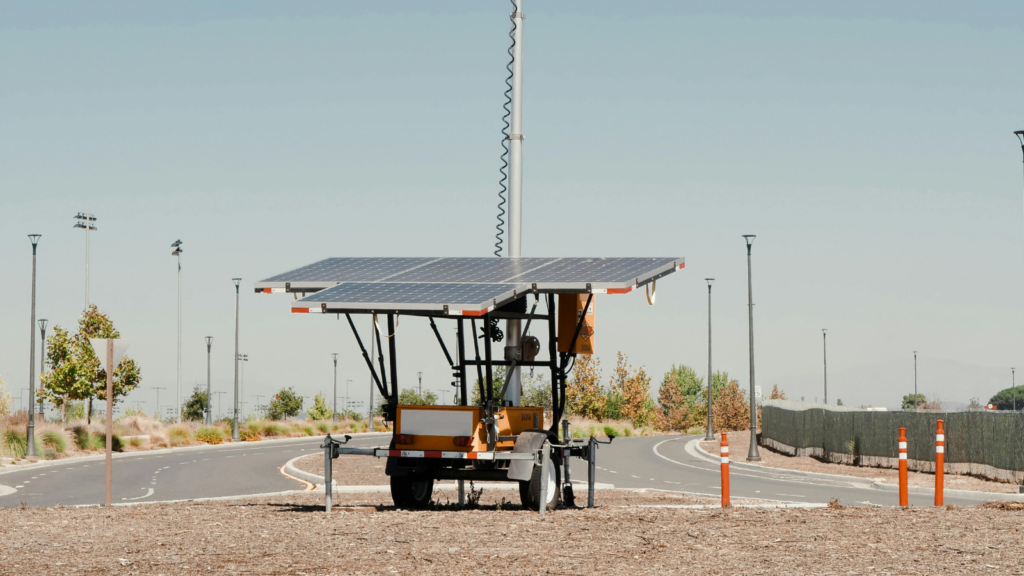Key Takeaways
- how often do solar panels need to be replaced: Solar panels generally last between 25 to 30 years, influencing both energy production and financial investments.
- Performance Indicators: Key signs for replacement include decreased energy efficiency (over 20% drop) and visible physical damage such as cracks or discoloration.
- Maintenance Matters: Regular cleaning and annual inspections can significantly extend the lifespan and efficiency of solar panels, preventing costly repairs.
- Cost of Replacement: Replacing solar panels can cost between $10,000 to $
As renewable energy gains traction, solar panels have become a popular choice for homeowners and businesses alike. However, many people wonder how often these panels need replacing. Understanding the lifespan of solar panels is crucial for anyone considering this investment, as it impacts both financial planning and energy efficiency.
Typically, solar panels are designed to last between 25 to 30 years, but their performance can vary based on factors like installation quality and environmental conditions. Knowing when to replace them can help maximize energy production and savings. This article dives into how often do solar panels need to be replaced and provides insights on when it’s time for an upgrade.
How Often do Solar Panels Need to be Replaced
Solar panels typically last between 25 to 30 years. Their longevity impacts energy production and financial investments.
Average Lifespan of Solar Panels
Most solar panel manufacturers offer warranties that cover 25 years, indicating expected performance during this period. Research shows that 90% of solar panels maintain at least 80% of their efficiency after 25 years. Quality materials and manufacturing processes directly influence durability and reliability.

- Installation Quality: Proper installation ensures optimal performance and protects against environmental damage.
- Environmental Conditions: Harsh weather, including hail, snow, or extreme temperatures, affects the lifespan of solar panels.
- Maintenance Practices: Regular cleaning and inspection can prevent degradation and extend overall efficiency.
- Panel Type: Different types of solar panels, such as monocrystalline or polycrystalline, exhibit varying durability characteristics.
- Location: Geographic factors, like proximity to coastal areas or pollution levels, can influence wear and tear on solar panels.
Indicators for Replacement
Several indicators signal when solar panels require replacement. Recognizing these signs can enhance energy production and cost savings.
Decreased Energy Efficiency
Decreased energy efficiency often serves as the first sign of aging solar panels. If energy production drops significantly—more than 20% from peak performance—it’s vital to assess the system. Routine monitoring can identify these shifts. If the panels no longer generate enough energy, replacement ensures optimal electricity output and financial returns.
Physical Damage
Physical damage can severely impact solar panel functionality. Cracks, chips, or severe discoloration typically indicate underlying issues. Even minor damage can decrease energy output and affect long-term performance. Regular inspections for such damage can prevent further complications. If multiple panels exhibit damage, replacement may be the best option to maintain system efficiency.
Maintenance Practices
Effective maintenance practices prolong the lifespan of solar panels and enhance their efficiency. Regular attention to cleaning and inspections can significantly affect overall performance.
Regular Cleaning and Inspections
Regular cleaning ensures solar panels operate at peak efficiency. Dirt, dust, and debris can accumulate, blocking sunlight and reducing energy output. Cleaning frequency depends on local environmental factors; locations with heavy rainfall may require less frequent cleaning than arid areas with lots of dust. Typically, a biannual cleaning suffices, though assessments should consider accumulation based on specific conditions.
Inspections serve as a proactive measure against wear and potential damage. Routine inspections help identify issues such as cracks or discoloration. Engaging a professional for an annual inspection guarantees that any emerging problems receive timely attention. Addressing minor issues early can prevent costly repairs later.
Repairs vs. Replacement
Understanding when to repair or replace solar panels is crucial for maintaining service delivery and efficiency. If panels show minor signs of wear, such as small cracks, repair might suffice. Many manufacturers provide repair kits or specialized services for minor damage.
However, if multiple panels exhibit significant damage or energy output drops over 20%, replacement becomes necessary. Continuing to use severely damaged panels diminishes overall system efficiency and can undermine long-term financial returns. Evaluating the cost-effectiveness of repairs versus replacement should include considerations for warranties and potential energy losses.
Cost Considerations
Understanding the financial implications of replacing solar panels plays a critical role in budgeting and long-term planning. Several factors influence the overall costs associated with replacement, including panel type, installation expenses, and available incentives.
Financial Implications of Replacement
Replacement costs for solar panels typically range from $10,000 to $30,000, depending on system size and specifications. Costs cover new panels, installation, and potential upgrades to other system components. Warranties may offset expenses, especially if the original panels failed prematurely.
Evaluating financing options is essential, as some homeowners may consider loans or leasing programs that spread costs over time. Offsetting initial investment can occur through Federal Investment Tax Credit (ITC) and various state incentives, reducing overall expenditure. Assessing potential energy savings against replacement costs can outline the financial viability of investing in new panels.
Long-Term Savings with New Panels

New solar panels offer improved efficiency, commonly achieving 20% to 22% conversion rates compared to earlier models that often peak at 15%. This jump in efficiency can significantly increase energy production, translating into greater savings on electricity bills.
Long-term considerations include the degradation rate of new panels, generally lower than older models. Most new installations maintain at least 80% efficiency well beyond 25 years, promising sustained energy savings. Also, newer technology often features enhanced durability, reducing maintenance costs over time. By investing in replacement panels, homeowners can enhance energy output and long-term financial returns, ensuring continued reliability in energy provision.
Provide Reliable and Sustainable Energy
Understanding the lifespan and replacement needs of solar panels is crucial for homeowners and businesses alike. With proper maintenance and regular inspections, many panels can last well beyond their expected lifespan. However, recognizing the signs of decreased efficiency or physical damage is essential for timely action.
Investing in new solar technology can lead to significant improvements in energy production and cost savings. By staying informed about the condition of their solar systems, individuals can make educated decisions that enhance both their energy efficiency and financial returns. Ultimately, proactive management ensures that solar panels continue to provide reliable and sustainable energy for years to come.

